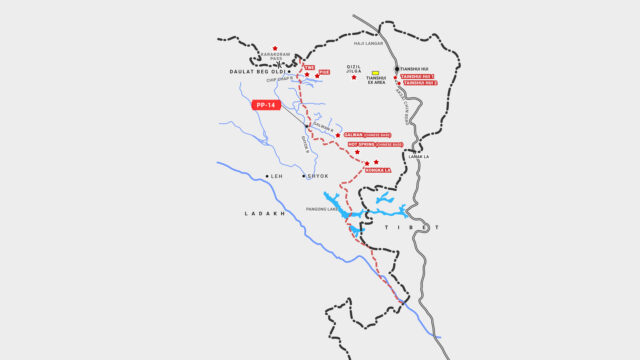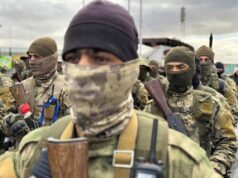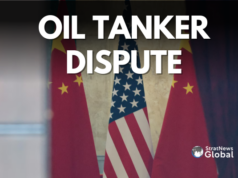NEW DELHI: The process of disengagement along different friction points on the Line of Actual Control (LAC) is proceeding according to the plan agreed at the June 30 meeting of the Corps Commanders in Chushul, reports from Ladakh indicate even as the Indian security establishment has concluded that the mobilisation of the People’s Liberation Army (PLA) had been sanctioned from the very top of the Chinese hierarchy and two, India , despite the beginning of the disengagement process, will have to watch the behaviour of the PLA very carefully. “We will have to be on our guard, verify the actions repeatedly and be prepared for a similar or even bigger episode in the next six months to one year time frame,” a national security official candidly admitted.
India’s national security managers led by National Security Adviser (NSA) Ajit Doval are keeping a close watch on the implementation through ground commanders even as the post-episode assessment of the latest tension with China moves into second gear. All key elements of the national security apparatus are now involved in an exercise to arrive at a broad conclusion on the motives and objectives behind the unprecedented Chinese mobilisation so close to the LAC in Ladakh. The timing of the Chinese military moves, the behaviour of the PLA commanders and troops and the likely worst-case scenarios in coming months are also up for discussion among serving military and intelligence professionals across different agencies. The aggression at the friction points shown by the PLA—and matched in more than equal measure by India’s ground troops as evident in the clash at Galwan—is being scrutinised closely.
The crisis began on May 4-5 when Indian and Chinese troops clashed at Finger 4 area on the north bank of the Pangong lake. The skirmish was followed by another spat at Naku La in faraway Sikkim.
Within days of the first incident at Pangong, Doval and Yang Jiechi, a senior Politburo member and a former Special Representative (SR) for boundary talks with India, discussed the situation over the telephone, agreeing that soldiers and commanders on both sides will be directed to ‘çool down’ temperatures at the friction points.
Many observers of India-China relations were intrigued that Doval spoke with Yang in May and not Wang Yi, the current SR and also China’s foreign minister. But diplomatic sources say India’s NSA spoke with Yang because he was designated as the pointsperson for strategic communication post the second informal summit between Prime Minister Narendra Modi and President Xi Jinping held at Mamallapuram in October 2019. Doval was designated India’s representative for initiating strategic communication when needed. The Doval-Yang conversation took place in that context.
Part of a paragraph in the joint statement issued by India and China at the end of the Mamallapuram summit is instructive. It reads: “The two Leaders shared their mutual vision on goals for development of their respective economies… the two sides will continue to adopt a positive, pragmatic and open attitude and to enhance appreciation of each other’s policies and actions in line with the general direction of their friendship and cooperation. In this regard, they also agreed to continue to enhance strategic communication on all matters of mutual interest, and to continue the momentum of high-level exchanges by making full use of dialogue mechanisms.”
After the Doval-Yang talk, both sides agreed that the local commanders will be told to cool down tempers at the Finger area. On the Indian side, the directive was swiftly passed down to the Northern Command and then to the 14 Corps via the Army HQ with a caveat that vigil on the border will be stepped up wherever necessary but all border agreement protocols will be followed to the tee. It was expected that the PLA would be similarly instructed from the top and that friction will not occur at disputed points.
The PLA, however, showed no signs of any drawdown or reduction in troops. As a result, by mid-May, the Northern Command started taking steps to beef up troop deployment in Sub-Sector North and Eastern Ladakh since the PLA continued to move forces in Aksai Chin and further towards the LAC in larger numbers.
Simultaneously, another round of fisticuffs and jostling happened at a couple of points in Eastern Ladakh, convincing the Indian military leadership that this was not the usual standoff. The deployment of Corps reserves in Ladakh was also ordered as a precautionary step. In Delhi, Prime Minister Narendra Modi, Raksha Mantri Rajnath Singh and NSA Doval were continuously updated by the Army brass on the developing situation.
Not willing to take chances, the Northern Command started swift ‘mirror’ deployment (matching numbers and equipment brought in by the Chinese close to the LAC). Mechanised forces, well-acclimatised infantry troops and artillery units were moved to their operational locations. Logistics chains were swiftly put in place even as the Indian Air Force (IAF) also mobilised. Fighter squadrons from as far down south as Thanjavur were moved into air bases located in the North Indian plains and the Leh airfield, apart from a couple of landing grounds in Ladakh buzzing with unprecedented air activity.
By first week of June, it was clear to the Chinese that India was neither intimidated by the large mobilisation nor backing down, so the first request for a meeting at the Corps Commanders level was received from the Chinese side after lower level officers met at different locations in Eastern Ladakh. The rest of the sequence is well-known to most people (three Corps Commanders’ level meetings, the violent clash at Galwan in between the first and the second meeting and the current process of disengagement, de-escalation and de-induction that began on Monday) to repeat here. What will bear watching however is the trajectory that India-China relations will take after the LAC crisis is defused—even if temporarily. For one, the Indian establishment is in no doubt that China is now India’s primary and most difficult challenge and managing the relationship without succumbing to China’s intimidatory tactics while simultaneously taking steps to strengthen the economy, the military and all other coercive instruments of state will be the main task for the decision-makers.
NSA Doval, in his seventh year as India’s pointsperson for China, has his task cut out. In 2017, he managed to resolve the standoff at Dolam (Doklam). In 2020, the job has become tougher as the current episode has shown, despite his detailed talk with Wang Yi on Sunday. The ongoing process will need careful handling till the intended objective is achieved. But it is the future course of action in dealing with China that will occupy the National Security Adviser’s mind more than ever before.
Nitin A. Gokhale is a media entrepreneur, one of South Asia's leading strategic affairs analyst and author of over a dozen books so far on military history, insurgencies and wars.
Starting his career in journalism in 1983, he has since led teams of journalists across media platforms.
A specialist in conflict coverage, Gokhale has covered the insurgencies in India’s North-East, the 1999 Kargil conflict and Sri Lanka’s Eelam War IV between 2006-2009.
Gokhale now travels across the globe to speak at seminars and conferences, and lecture at India’s premier defence colleges. He has founded three niche portals, Bharatshakti.in, stratnewsglobal.com and Interstellar.news.





